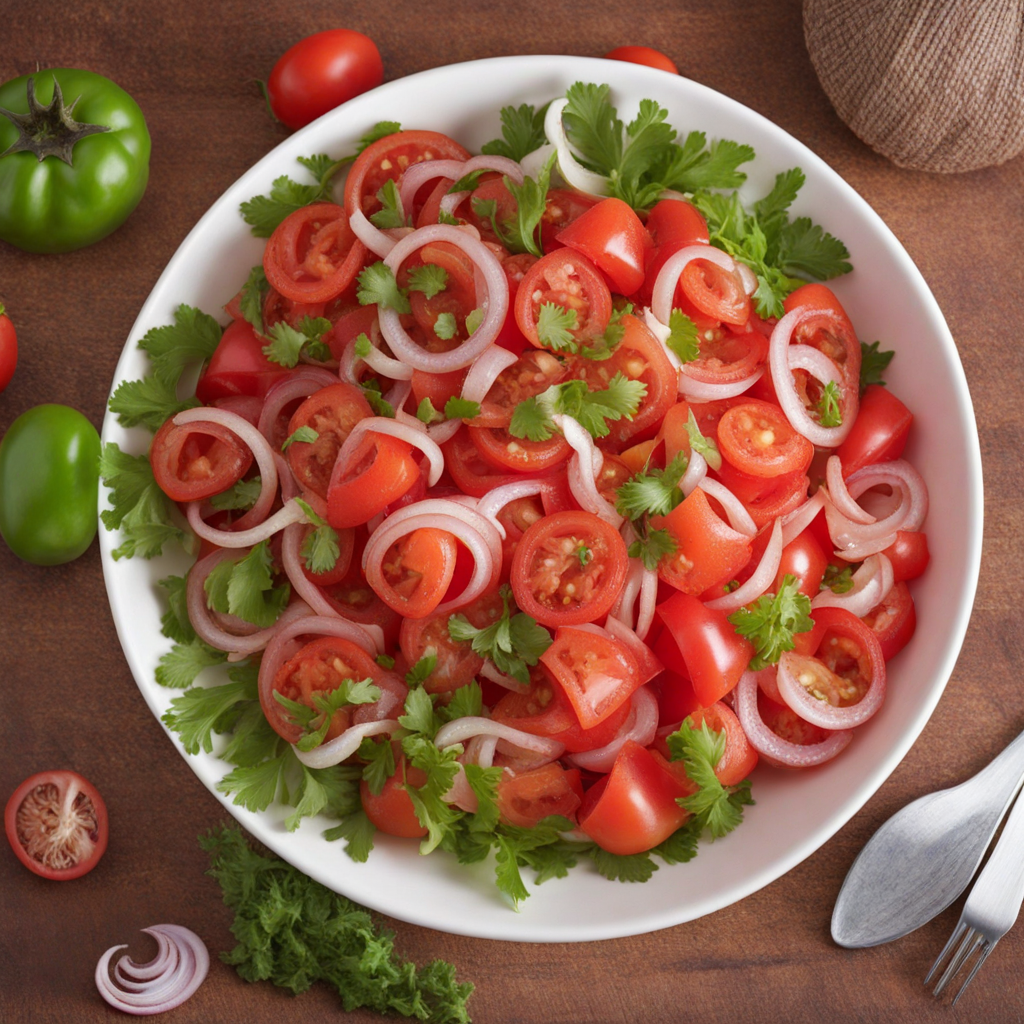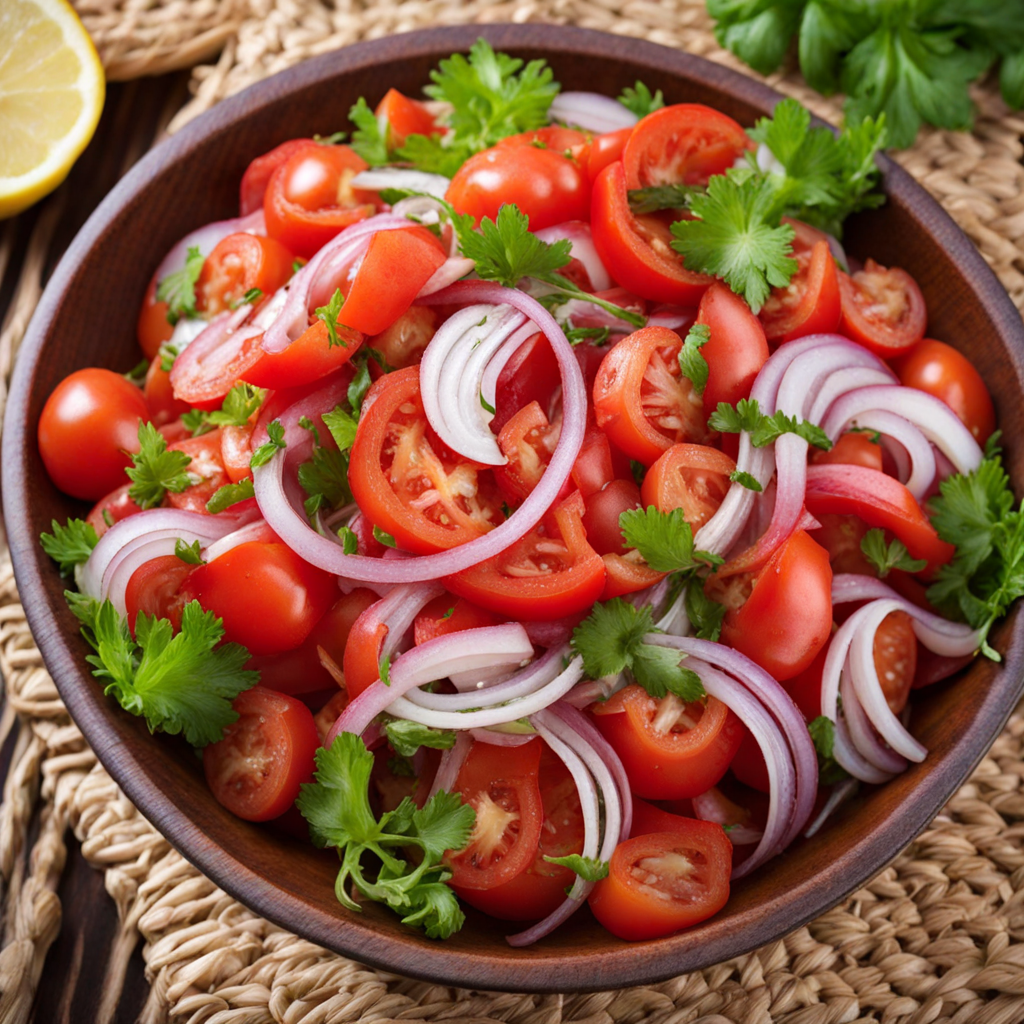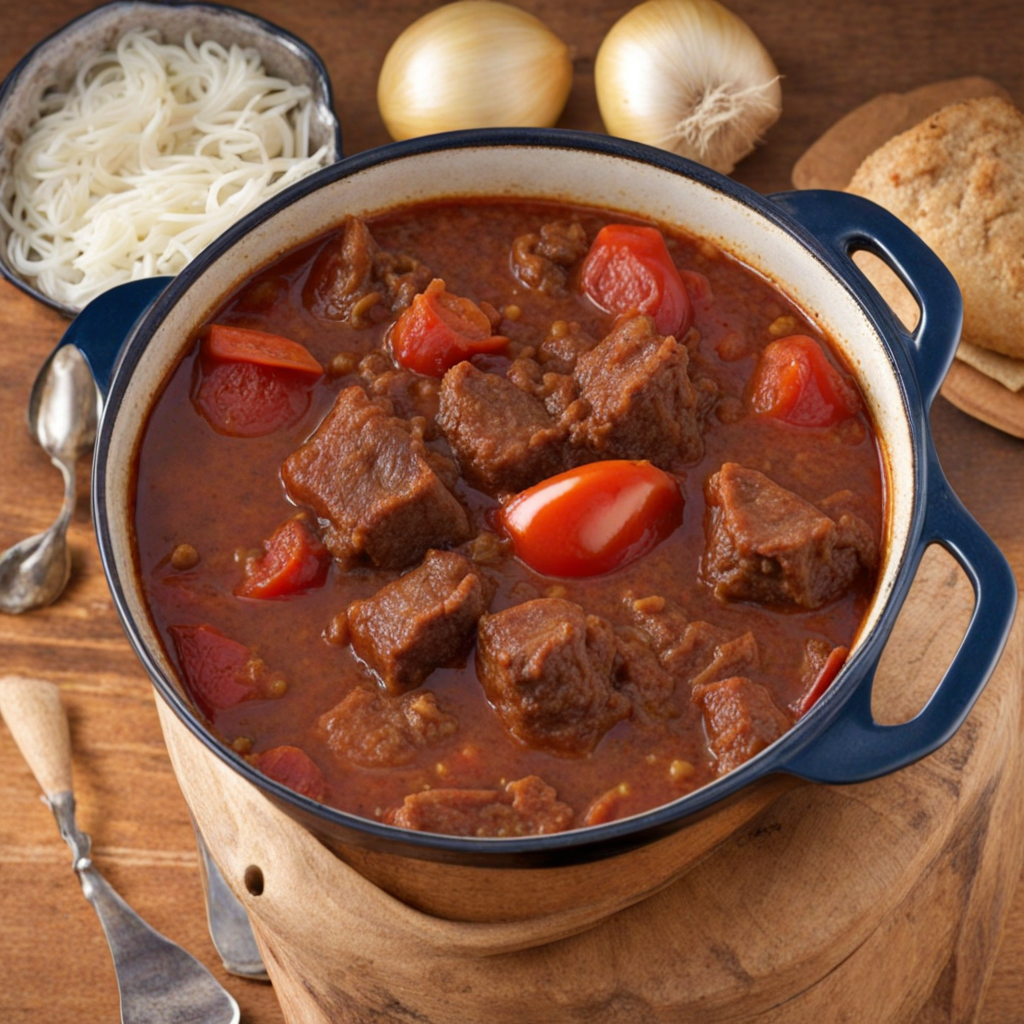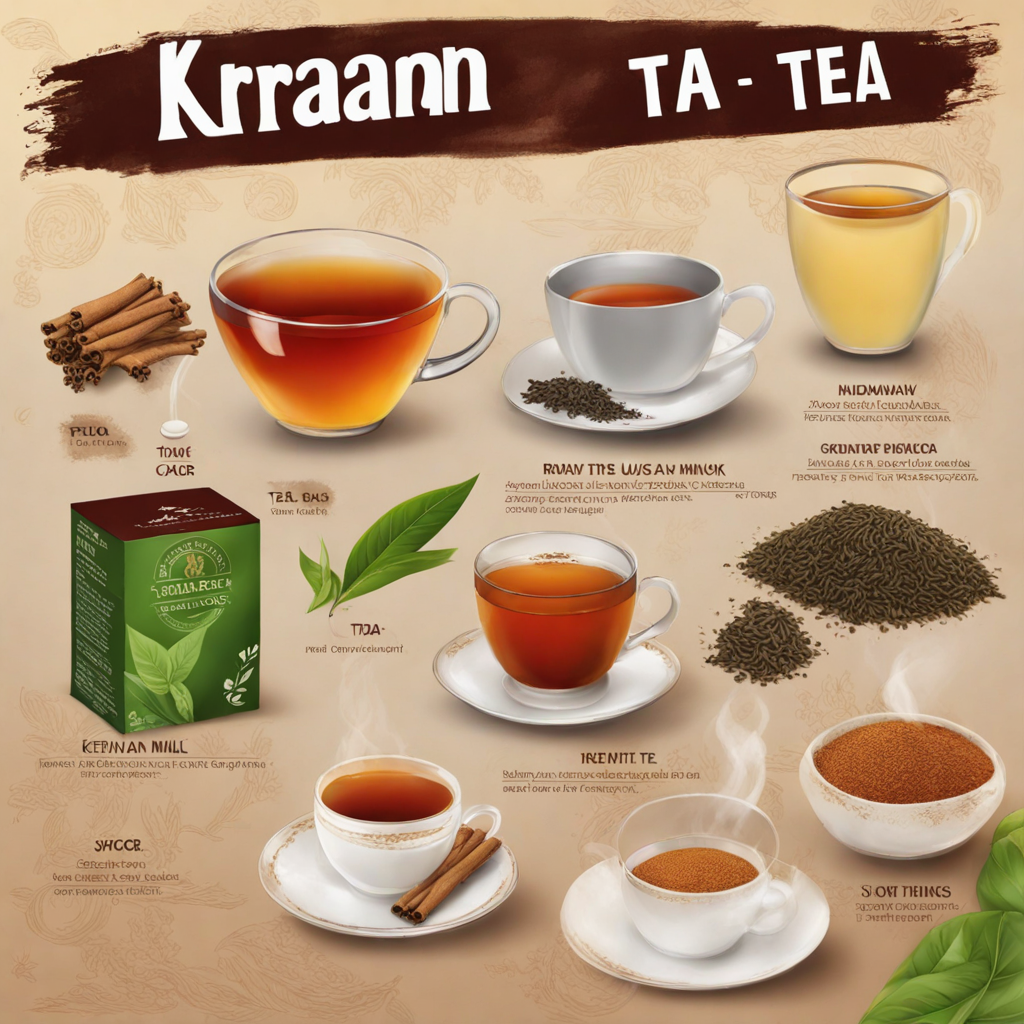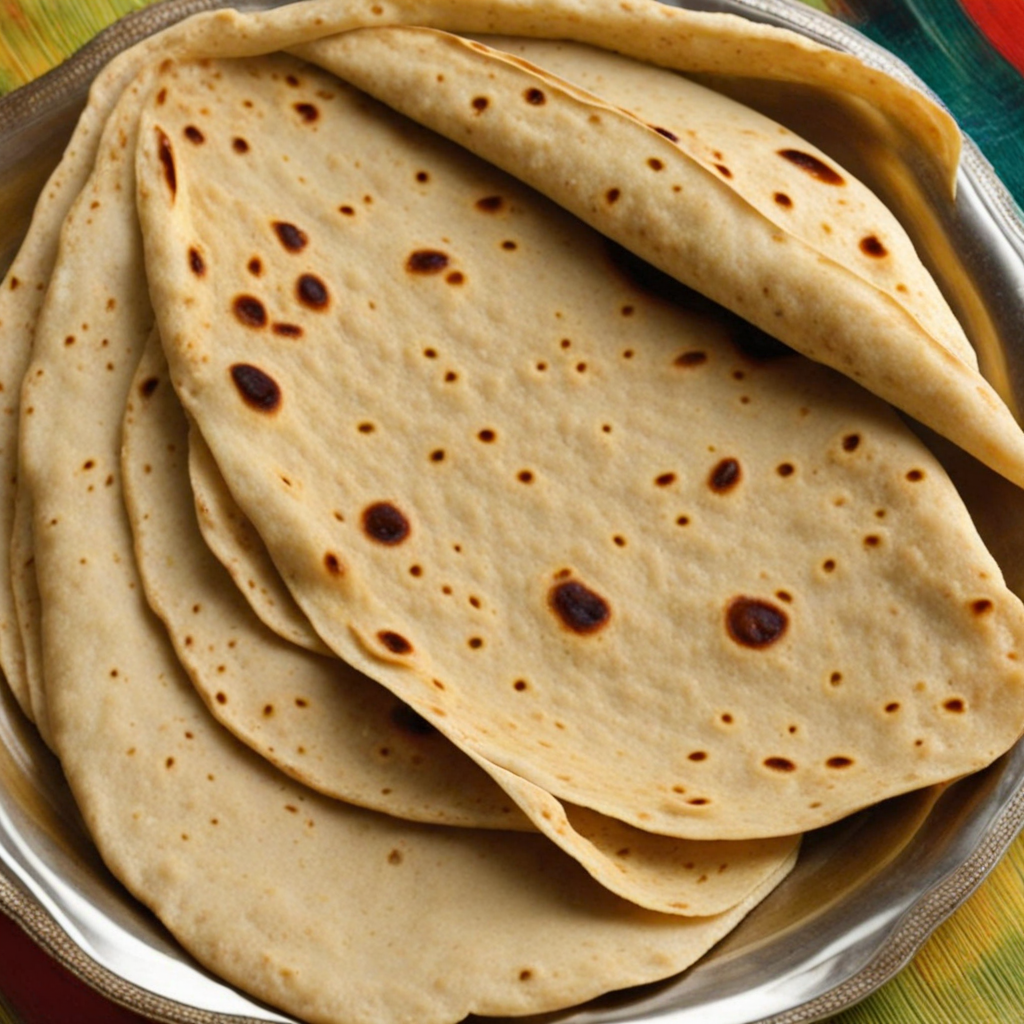Kachumbari
Kachumbari is a vibrant and refreshing Kenyan salad that embodies the essence of East African cuisine. Primarily made with finely chopped tomatoes and onions, this dish is often enhanced with fresh herbs like cilantro and sometimes avocado, giving it a delightful burst of flavor and color. The freshness of the ingredients is what truly sets Kachumbari apart, making it a perfect accompaniment to many traditional Kenyan dishes, particularly grilled meats and spicy stews. One of the defining characteristics of Kachumbari is its zesty flavor profile, which is typically elevated with a splash of lime or lemon juice and a sprinkle of salt. This zestiness not only enhances the taste of the raw vegetables but also adds a refreshing brightness that balances out richer dishes. Some variations include diced chili peppers for a bit of heat, making it a versatile side dish that caters to different palates and preferences. Beyond its taste, Kachumbari also serves as a cultural symbol, often enjoyed during communal gatherings and celebrations. Its ease of preparation and the availability of fresh ingredients make it a popular choice for families and street vendors alike. With its combination of textures and flavors, Kachumbari is not just a salad; it's a celebration of Kenyan culinary traditions that invites anyone to explore the rich and diverse tastes of the region.
How It Became This Dish
Kachumbari is a vibrant and refreshing salad that has become emblematic of East African cuisine, particularly in Kenya. Its origins can be traced back to the diverse culinary practices of the region, where various cultures have contributed to a rich tapestry of flavors and ingredients. Kachumbari’s base typically consists of finely chopped tomatoes, onions, and chili peppers, often dressed with lime or lemon juice, salt, and sometimes oil. This simple yet flavorful dish is a testament to the use of fresh, local produce and reflects the agricultural bounty of Kenya. Origins and Early Influences The roots of Kachumbari can be linked to the Swahili culture along the East African coast. The Swahili people, a mix of Bantu and Arab influences, developed a cuisine that integrated spices and ingredients from trade routes that connected Africa, the Middle East, and beyond. As a result, Kachumbari showcases the region's ability to adapt and incorporate various culinary elements. The use of fresh vegetables in Kachumbari aligns with the traditional farming practices of local communities, who have cultivated tomatoes, onions, and chilies for generations. In its earliest forms, Kachumbari may have been a more straightforward vegetable salad, used as a side dish to complement the staple foods of the time, such as ugali (a stiff porridge made from maize flour) and nyama choma (grilled meat). The combination of fresh vegetables not only added flavor and texture to meals but also provided essential nutrients, reflecting the lifestyle of communities reliant on subsistence farming. Cultural Significance Kachumbari holds a special place in Kenyan culture and cuisine, serving as a symbol of hospitality and togetherness. It is a common accompaniment to various dishes at gatherings, celebrations, and everyday meals. The preparation of Kachumbari often involves family members working together, emphasizing the communal aspect of food in Kenyan society. This salad is particularly popular at barbecues and social events, where it complements the rich flavors of grilled meats and other traditional dishes. Moreover, Kachumbari transcends ethnic boundaries in Kenya, being embraced by various communities, including the Kikuyu, Luo, and Luhya, among others. Each group may have its own variation, incorporating unique ingredients or preparation methods, showcasing the dish's adaptability. In urban areas, Kachumbari has evolved into a popular street food item, often sold by vendors and enjoyed by locals and tourists alike, further cementing its status as a national dish. Development Over Time As Kenya has modernized and global influences have permeated its culinary landscape, Kachumbari has also evolved. In the late 20th and early 21st centuries, the dish began to incorporate a wider variety of ingredients, reflecting the changing tastes and lifestyles of Kenyans. The introduction of avocado, for example, has added a creamy texture and richness to the salad, while also increasing its nutritional value. This adaptation illustrates how Kachumbari remains relevant, continually evolving to meet the preferences of new generations. In addition to avocados, other elements such as coriander (cilantro), cucumber, and even fruits like mango and pineapple have been integrated into Kachumbari recipes, bringing a modern twist to the traditional dish. These variations not only enhance the flavor profile but also cater to the growing interest in health-conscious eating and vegetarian diets. As a result, Kachumbari is now often seen as a versatile dish that can be tailored to suit various dietary preferences. Global Recognition With the rise of global culinary exchanges, Kachumbari has gained international recognition, finding its way onto menus in restaurants worldwide. As more people become interested in exploring African cuisines, the refreshing and colorful nature of Kachumbari appeals to a diverse audience. It is often highlighted as a dish that embodies the essence of Kenyan food: fresh, simple, and bursting with flavor. Food festivals and cultural events celebrating African cuisine often feature Kachumbari, introducing it to new audiences and promoting a greater understanding of Kenyan culinary traditions. As Kenyans living abroad continue to share their culture through food, Kachumbari serves as a delicious ambassador of the country’s rich heritage. Health Benefits Beyond its cultural significance, Kachumbari is also recognized for its health benefits. The primary ingredients—tomatoes, onions, and chilies—are rich in vitamins, minerals, and antioxidants. Tomatoes, for instance, are an excellent source of lycopene, a powerful antioxidant linked to numerous health benefits, including reduced risk of chronic diseases. Onions provide essential nutrients like vitamin C and dietary fiber, while chilies add a spicy kick and are known to boost metabolism. With the increasing emphasis on health and wellness, Kachumbari is often celebrated as a nutritious option that aligns with current dietary trends. Its fresh ingredients and minimal processing make it a favorite among those seeking to incorporate more whole foods into their diets. Additionally, the dish is naturally gluten-free and can easily be made vegan, appealing to a broad range of dietary needs. Conclusion Kachumbari is more than just a simple salad; it is a reflection of Kenya’s rich cultural heritage and culinary evolution. From its origins in the coastal Swahili culture to its status as a beloved national dish, Kachumbari has adapted and thrived in the face of changing times. Its vibrant flavors, health benefits, and communal significance make it a staple in Kenyan households and a symbol of the country’s diverse culinary landscape. As it continues to evolve, Kachumbari will undoubtedly remain a cherished part of Kenya’s food identity for generations to come.
You may like
Discover local flavors from Kenya


